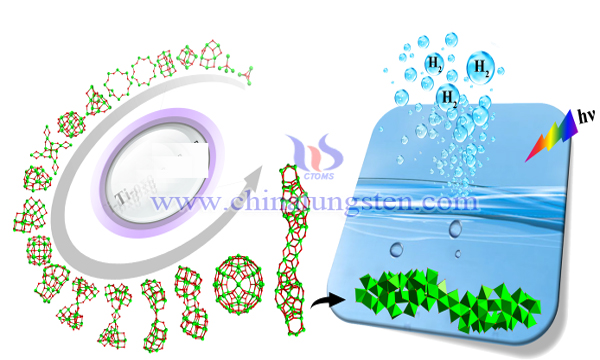Visible Light Photocatalytic Materials of Zinc Tungstate - Bismuth Iodide Heterojunction
- Details
- Category: Tungsten Information
- Published on Wednesday, 27 March 2019 23:18
In recent years, photocatalysis has attracted widespread attention in environmental control and energy development. Zinc tungstate, as an important photocatalyst, has shown good photocatalytic activity in the photolysis of water and degradation of organic pollutants, and has become a research hotspot at home and abroad.

However, due to its large bandgap energy, zinc tungstate can only be stimulated by ultraviolet light, and the photogenerated electron hole pair recombination is fast, which limits its practical application. In order to make full use of sunlight, the modification of zinc tungstate to extend its spectral absorption to visible light region and improve its visible light photocatalytic activity is of great significance for the development of zinc tungstate photocatalyst.
Based on the above purpose, some scholars have developed an efficient visible-light photocatalytic material of zinc tungstate-bismuth iodide heterojunction. Can this new material significantly improve the separation probability of photogenerated carriers and the photocatalytic performance of the material?
Zinc tungstate-bismuth iodide heterojunction visible-light photocatalytic material is composed of zinc tungstate and bismuth iodide. Its chemical formula is ZnWO4/BiOI. The synthesis process is as follows:
(1)Preparation of zinc tungstate nanorods: dissolve zinc acetate and sodium tungstate in deionized water respectively, then add sodium tungstate solution into zinc acetate solution and stir it evenly, adjust the pH value of the solution with ammonia solution; transfer the mixed solution to the reactor after stirring evenly, and react at 180 C for 12 hours, then cool it naturally to room temperature, collect, wash and dry the product. Zinc tungstate nanorods were obtained.
(2)Preparation of zinc tungstate-bismuth iodide heterojunction photocatalytic materials: dissolve potassium iodide in deionized water, add equal amount of bismuth nitrate and continue stirring; then add step (1) to the above mixed solution to prepare zinc tungstate nanorods, stirring uniformly at room temperature, then heating in water bath at 80 C for 2 hours; collect, wash and dry the products, and obtain zinc tungstate-bismuth iodide oxide. Heterojunction photocatalytic materials.
The photocatalytic efficiency of the prepared zinc tungstate-bismuth iodide heterojunction photocatalytic material for methyl orange degradation was more than 86% after 4 hours of visible light irradiation at wavelength greater than 420 nm. In contrast, the pure zinc tungstate showed little visible photocatalytic activity, and the degradation efficiency of pure bismuth iodide oxide was only 26%.
- Tungsten Oxide Manufacturer & Supplier, Chinatungsten Online: www.tungsten-oxide.com
- Tungsten News & Prices of China Tungsten Industry Association: www.ctia.com.cn
- Molybdenum News & Price: news.molybdenum.com.cn
- Tel.: 86 592 5129696; Fax: 86 592 5129797; Email: sales@chinatungsten.com



 sales@chinatungsten.com
sales@chinatungsten.com